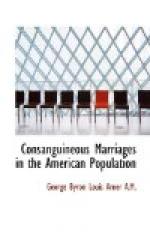TABLE XXX. ------------------------------------------------------------
------------ | | Consanguinity | | | of Parents. | Per Cent. | |---------------------------------------------- Class of Deaf | | | Not | Not | | Not | Not Relatives.[A] |Total. |Cousins|Cousins|stated |Cousins|Cousins|stated ------------------------------------------------------------
------------ Total |14,472 | 1,710 | 11,322| 1,440 | 11.8 | 78.2 |10.0 ------------------------------------------------------------
------------ Stated |13,428 | 1,647 | 11,110| 671 | 12.3 | 82.7 | 5.0 Not stated | 1,044 | 63 | 212| 769 | 6.0 | 20.3 |76.7 (a) relatives | 5,295 | 986 | 3,961| 48 | 18.6 | 74.8 | 6.6 (b) and (c) but | | | | | | | no (a) relatives| 860 | 126 | 686| 48 | 14.6 | 79.8 | 5.6 No (a), (b) or | | | | | | | (c) relatives | 7,273 | 535 | 6,463| 275 | 7.3 | 88.9 | 3.8 ------------------------------------------------------------
------------ [A] Symbols for deaf relatives: (a) deaf brothers, sisters or ancestors; (b) deaf uncles, aunts, cousins, etc.; (c) deaf children.
A further analysis of the congenitally deaf according to consanguinity of parents and deaf relatives, as in Table XXX, helps to determine to what extent the greater number of deaf children to a family among the offspring of consanguineous marriages has influenced the totals. From the report it cannot be determined how many of the congenitally deaf had (a), (b) or (c) relatives alone, but the existence of (b) and (c) relatives would almost certainly indicate that the deafness was hereditary. Of these 14.6 per cent were the offspring of cousins, while of those having (a) relatives 18.6 per cent were the offspring of consanguineous unions. Thus it would seem to be a more reasonable conclusion that where two or more deaf-mutes appear in the same family, at least a tendency toward deaf-mutism is hereditary in the family and is intensified by the marriage of cousins, rather than that consanguineous marriage is in itself a cause. The fact that in many cases the relationship would “work both ways” would not greatly affect the percentage of the offspring of cousins having (b) and (c) relatives, for the chance would be slight that the (b) or (c) relative would be himself the offspring of a consanguineous marriage. Among the congenitally deaf who reported no deaf relatives, the percentage of consanguineous parentage is still high, (7.3 per cent), but this excess can easily be accounted for by the ignorance of deaf relatives on the part of the informant, without contradicting the hypothesis of heredity.
Basing now our percentages on the totals of consanguineous and non-consanguineous parentage respectively, and including only those who answered the inquiry as to deaf relatives, it will be seen (Table XXXI) that while of all the deaf less than one third are returned as having deaf relatives, of the deaf who were the offspring of cousins over one half (55.5 per cent) were returned as having (a) or (b) deaf relatives.




